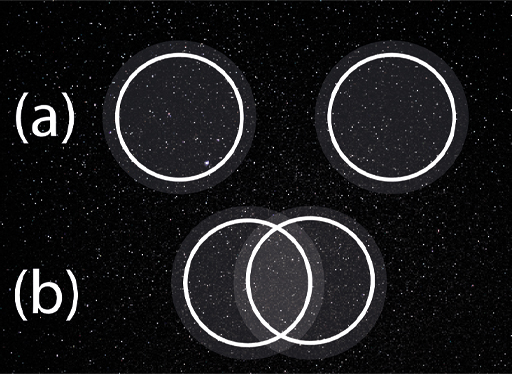6 Beyond the edge
What lies beyond the edge of the observable universe? Again, it’s important to be careful and take the time into account. The ionised gas that we now see as the CMBR will have since condensed into atoms, stars and galaxies.
Cosmologists have long been guided by what is called the ‘cosmological principle’. This states that on the very largest scales the universe is generally ‘homogeneous’ (all places are alike) and ‘isotropic’ (all directions are alike). The observations of the very smooth CMBR have only strengthened this view. From this principle, it can be inferred that those distant regions beyond the observable universe will be much the same as our own neighbourhood. Of course, this principle could well be incorrect, and distant parts of the universe may be rather different from our own. If that were the case, much of our cosmology would have to be revised.
There will be stars, galaxies, clusters and superclusters of galaxies out there which we cannot see, because they lie beyond the edge of the observable universe – light from them is on its way to us, but hasn’t yet arrived. Likewise, if there are astronomers in those galaxies they can never learn about us, because we lie beyond the edge of their observable universe. You can think about this in terms of individual circles, as in Figure 8. In (a) the observable universes are quite separate. In (b) they overlap, and some of the same galaxies can be seen in both.
One thing that has not yet been discussed here is the extent of the wider universe. Our observable universe – bounded by the cosmic background radiation – is finite. But beyond that ‘edge’, how big is the universe as a whole? Could this be infinite?

